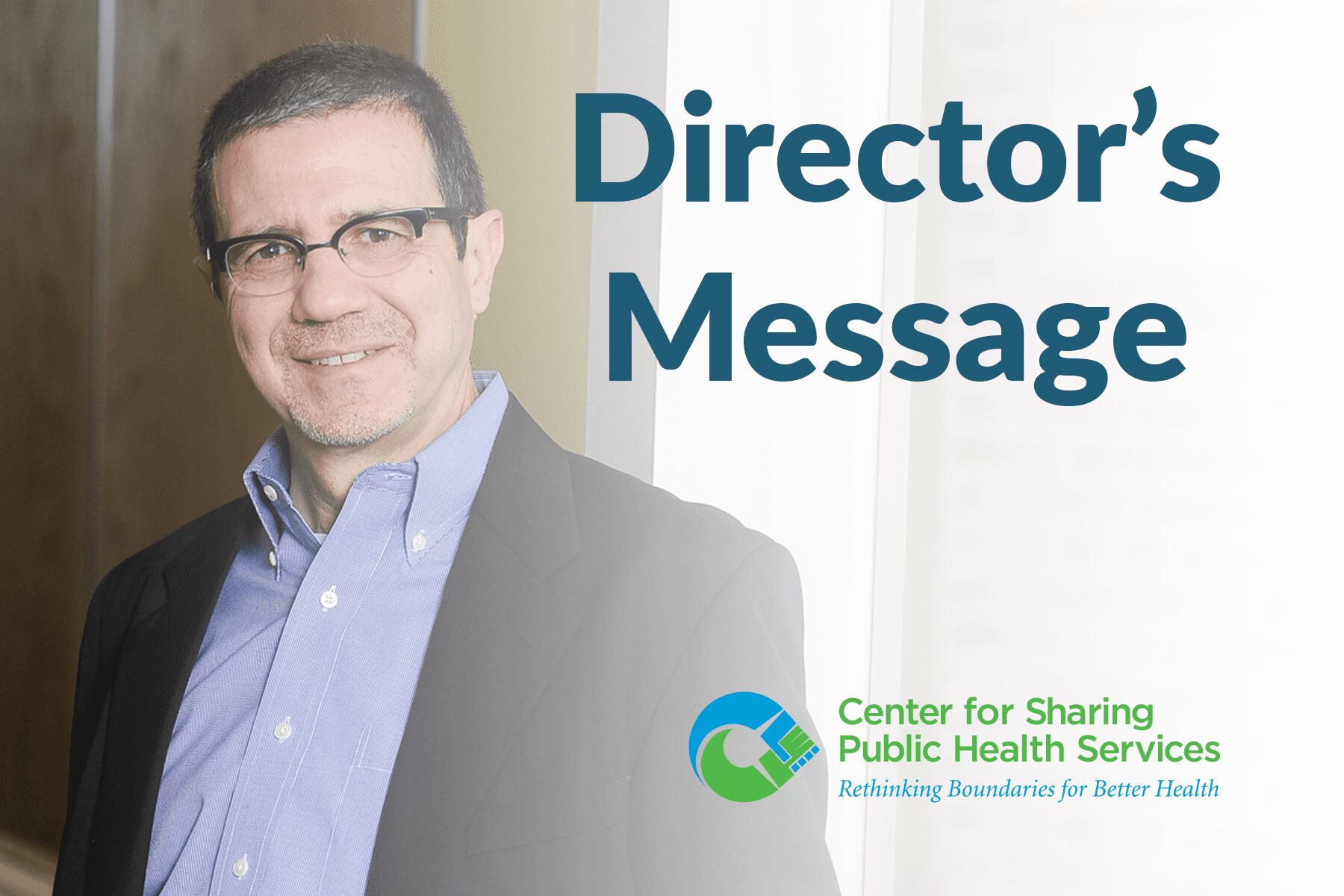A Message from the Director of the Center for Sharing Public Health Services
Stories build bridges. Not only do they connect people across generations and experiences, stories also help us to bridge the gap between theory and practice. By combining a complex concept with a narrative, we can more easily picture how to incorporate that concept into our life and our work. It comes down to this — new concepts are often easier to grasp when they are explained in a story.
At the Center for Sharing Public Health Services, we have long recognized the power of storytelling. One way we disseminate learnings is by sharing stories from our grantees and other public health professionals who have worked on cross-jurisdictional sharing (CJS) initiatives. We try to weave real-life stories into everything we do, from providing technical assistance to presenting at conferences and during webinars.
Recently, we published several stories on the CJS in Action page of our website. Each two-page Case Example is designed to build a bridge between theory and practice by telling actual stories of how public health professionals have used CJS solutions to improve effectiveness, efficiency or both.
Because health departments and communities are unique, every CJS solution is unique. Our story collection reflects arrangements from the CJS Spectrum as well as a variety of programs and functions that are shared. For example, here are several stories about different ways health departments have used CJS to improve their environmental health programs.
- In Nevada, Douglas County relied on the state for years to provide environmental health inspections. When the state announced it was going to charge more for services, Douglas County decided it was time to make a change. They approached Carson City Health and Human Services (CCHHS), and after much planning, began purchasing environmental health services from them. The new service-related arrangement has been good for everyone involved. The community is better served, Douglas County has experienced improved scheduling and better customer service and CCHHS now has a deeper bench of inspectors and has been able to make program improvements with the additional funding.
- In Colorado, one state employee was responsible for providing food establishment inspections to six counties in the San Luis Valley, an area encompassing more than 8,000 square miles. In response to a new state mandate that required more robust environmental health services, the counties quickly realized they needed to develop a shared program in order to fully comply. First, they formalized a long-standing partnership, then they formed a regional shared environmental health program, with its own budget and contract deliverables. Counties are now providing an array of environmental health activities in a timely, high-quality manner.
- In rural New York, two counties came together to share resources and staff, anticipating that they would eventually expand the services shared by their departments. They now share executive-level leadership in all major program areas, including environmental health. Merging in this way has enabled each health department to fill in gaps due to staff absences and keep up with service demands. Moreover, staff with specialized expertise, who otherwise were working in one health department, now are shared across county lines.
Like bridges, these stories serve as connectors by linking what can be a complex topic with real-life examples that can be considered in other locations.
We have additional stories on our website that describe how counties have used different CJS models focused on emergency preparedness, communicable disease, immunization, information technology and chronic disease.
Stories are important. You can help us to bridge the gap between theory and practice by sharing your stories of how cross-jurisdictional sharing has helped your health department meet challenges. If you have a story to share or need technical assistance on a cross-jurisdictional sharing initiative, please contact us at phsharing@khi.org.
— Gianfranco Pezzino, Director
